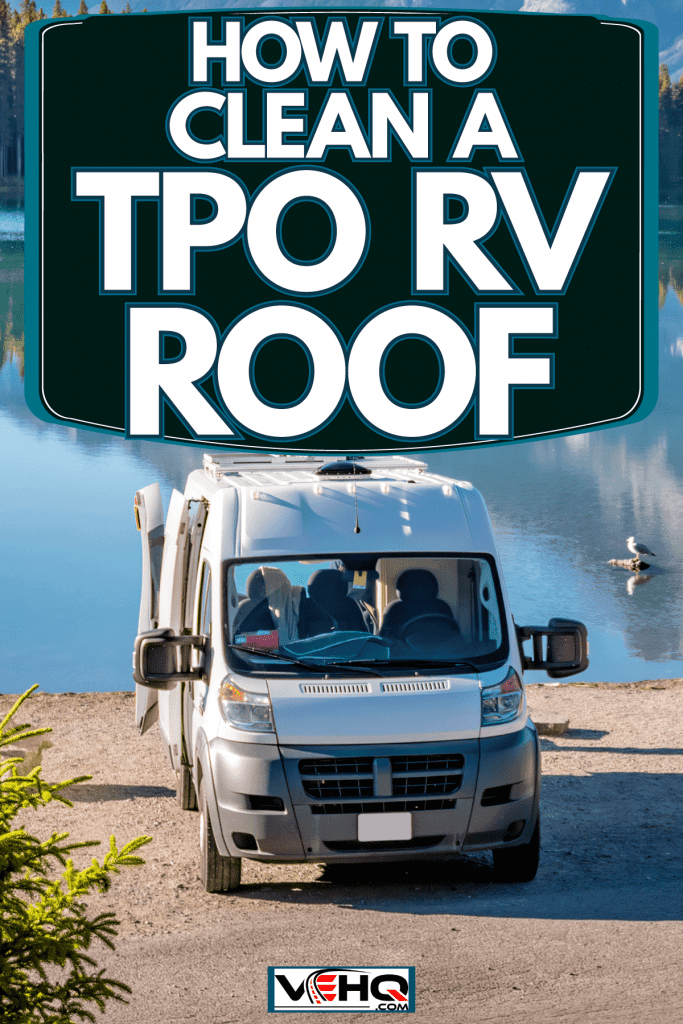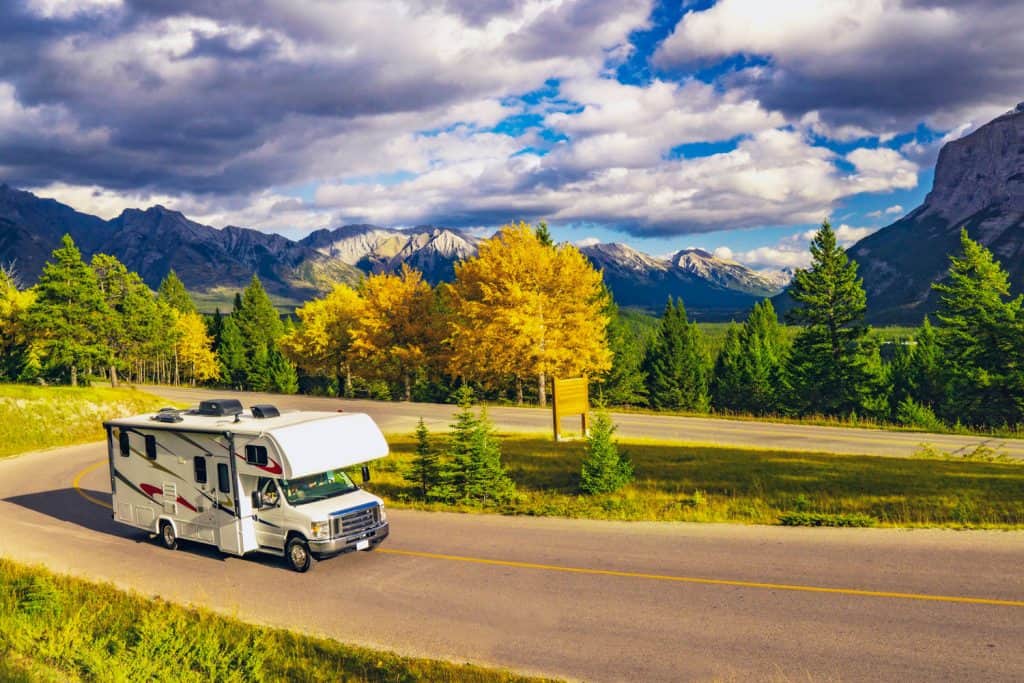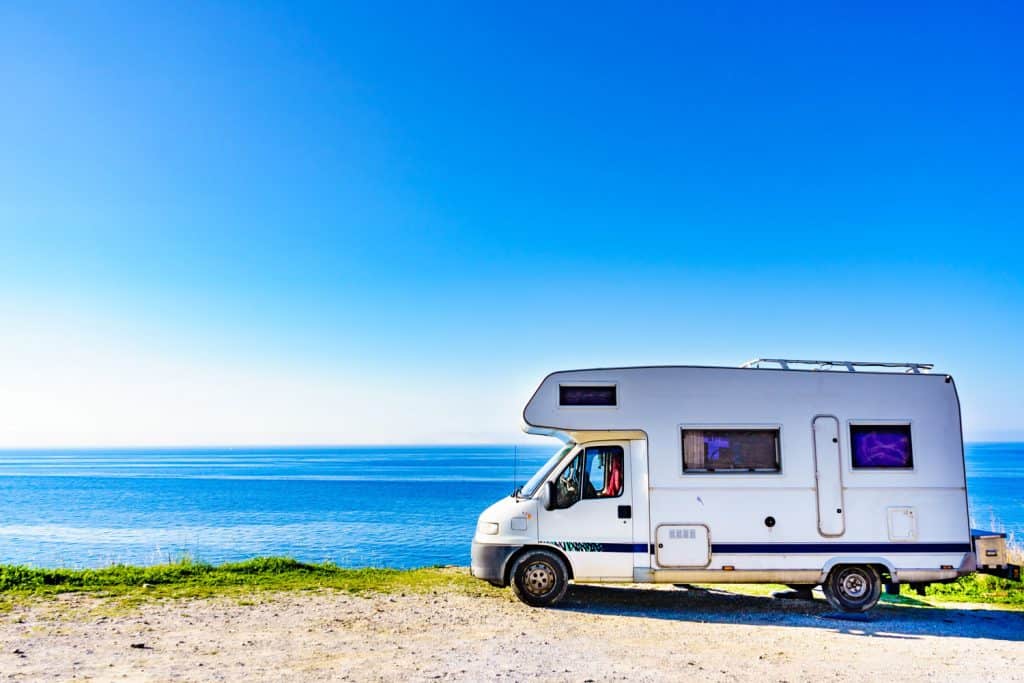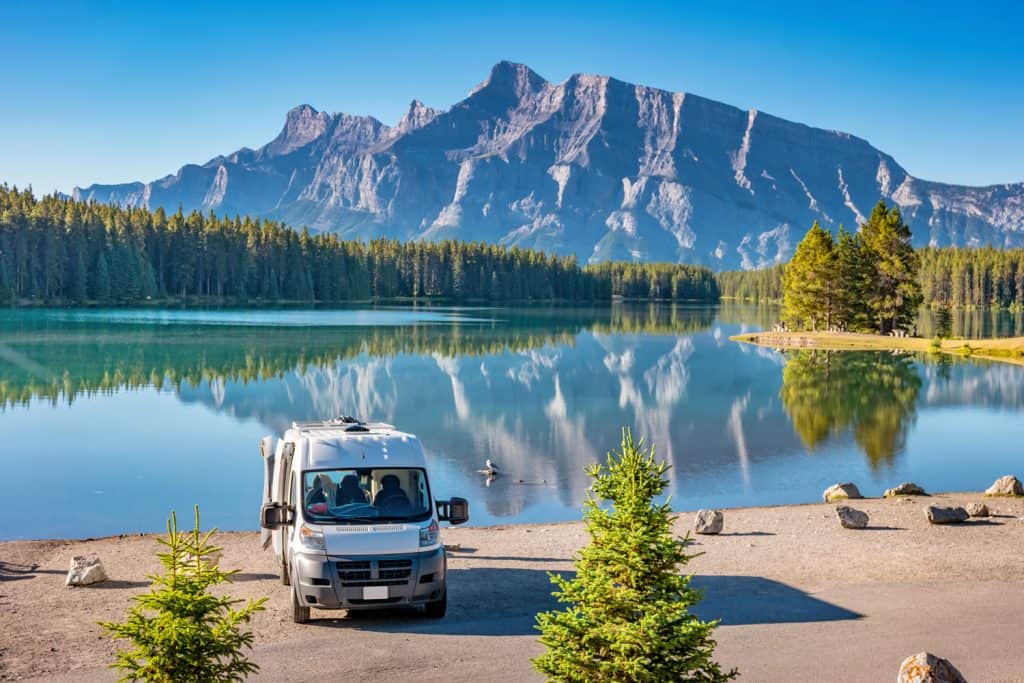Similar to regular sedans and SUVs, RVs need to be cleaned on occasion. The cleaning also involves wiping down the roof and removing any debris. Many RVs come with a TPO roof which is made of a combination of rubber and polypropylene resin blends. So how exactly do you clean a TPO roof? For your convenience, we have researched the best products and methods to do so.
Here are the steps to clean a TPO roof on your RV:
- Gather your equipment and cleaning products
- Create your cleaning solution
- Sweep the roof
- Hose off the sides
- Apply the cleaner
- Rinse off the roof
The roof on an RV may endure a bit more than your typical vehicle, as they're designed to withstand outdoor weather conditions. These roofs are commonly subjected to ice, snow, wildlife, dead insects, fallen leaves, and other debris. Continue reading to learn about the best way to clean your roof safely and effectively.

Steps To Clean A TPO RV Roof
Keeping your RV's roof clean is an essential step in the overall maintenance of the vehicle. Not only can it prevent the roof from developing permanent spots and stains but it can also help to extend its lifespan.

It's best to try to clean your roof about every three to four months if you use your RV frequently. This can also help you keep a preventative eye on any potential issues that may develop, such as leaks or damage.
Here are things you'll need to clean your RV's TPO roof:
- Bleach
- Simple Green All-purpose Cleaner (or another all-purpose cleaner)
- Broom
- 2-gallon bucket
- Water hose (preferably with spray nozzle)
- Lint-free cleaning rag
- Floor brush
1. Gather your equipment and cleaning products
Start by making a list of all the materials that you need and gathering them on top of your RV. This will prevent you from having to go back and forth from the roof during the process. Place everything at the end corner of the roof.
Next, grab a water hose and plug it into an outside faucet. Make sure that the RV is parked close enough to the hose to where you can rinse off the entire roof.
Also, be sure that you wear shoes that have adequate traction, as you don't want to create a slipping hazard when you wet the roof and apply the cleaner.
2. Create your cleaning solution
Next, fill your two-gallon bucket with 6 to 10 ounces of cleaning solution and a gallon of cold water.
Buy Simple Green all-purpose cleaner on Amazon.
3. Sweep the roof
Grab your ladder and set it on the side of the RV toward the back (if the RV doesn't have a ladder). After preparing your cleaning solution, take your broom and start at one end of the RV, sweeping the roof from side to side.
It's best to sweep the debris in one direction to avoid getting it on both sides of the RV. This will help with the cleanup process later.
4. Hose off the sides
Head back down and use your water hose to hose down the sides, front, and back of the RV. Doing so will prevent streaks from developing in these areas once you rinse off the roof.
However, if it is especially warm outside and you're cleaning the roof in an unshaded area, rinse the RV off again after applying the cleaner (but before rinsing the roof).
5. Apply the cleaner
Next, spray the roof with the water hose to wet and loosen any dirt. Then, apply the cleaner by spraying it with a water bottle or applying it with your cleaning cloth. Work the cleaner into the roof and use the scrub brush in a circular motion.
Be sure to pay special attention to the corners of the roof, where debris and dust will often accumulate. Scrub away any loose dirt or residue thoroughly before moving to the next step. If you have hardened residue, apply the cleaner and let it sit on the affected areas for about 10 minutes before scrubbing them.
6. Rinse off the roof
Next, climb down from the roof and use the water hose to rinse off all the cleaner.
Find this water hose on Amazon.
Additional Tips For Cleaning RV Roofs
Here we'll talk more about some additional tips for cleaning off an RV roof.
Only use non-corrosive rubber cleaners
When looking for a cleaner for your TPO roof, it's best to stick with those that are approved for rubber materials and don't contain harsh ingredients such as ammonia or silica. If you do use bleach to get rid of mold or mildew, always dilute it with water and rinse it off completely.
Also, avoid using citrus-based solvents on TPO roofs, as they can cause the material to corrode and strip the finish. If you have hard, sticky tree sap residue, use mineral spirits and a soft-bristle brush to remove it.
In some cases, you may need to let the mineral spirits sit for about 10 to 15 minutes. Be sure to brush the area in circles and rinse the area thoroughly afterward.
Find this can of mineral spirits on Amazon.
Scrub the roof in small sections
Scrubbing a TPO roof can be a very laborious task, which is why it's best to only cover a small area at a time. When scrubbing the roof, be sure to only cover a two- to three-foot area at a time. This will allow you to thoroughly clean each area, and it will help prevent you from slipping and falling while on the roof.
Need a visual of how it's done? Check out this video:
How do you remove mold from a TPO RV roof?
Removing mold from a TPO RV roof is fairly simple. You can add this step in after using your all-purpose cleaner. To do it, simply mix one part bleach with four parts of water in another 2-gallon bucket or a plastic spray bottle.
Next, spray the moldy areas with bleach, making sure to saturate them. You should notice the spots appearing lighter almost immediately. Let the bleach sit on the top for about 10 to 15 minutes, and then scrub them with your brush.
Then rinse the area with the water hose, making sure to remove any traces of the bleach, as you don't want it lingering on the rooftop.

Can you use bleach on an RV TPO roof?
Yes, you can use bleach on a TPO RV roof. Bleach is often the best solution to get rid of mold and mildew, which can be common on an RV roof. However, the bleach should be used safely and with extreme caution.
Be sure to dilute the bleach with four parts water and rinse it thoroughly. Failure to do so can cause the bleach to weaken the material of the roof, which can cause cracks, degradation, and a loss in elasticity.
Does a TPO roof need UV protection?
Most TPO roofing materials offer a significant amount of UV protection and thermal resistance. The TPO material is often enhanced with light stabilizers that increase UV protection and color retention. So, these rooftops can withstand a significant amount of exposure to UV radiation without becoming damaged, turning yellow, or cracking.
What is the life expectancy of a TPO roof?
On average, you can expect a TPO roof to last anywhere from 15 to 20 years. If you store your RV indoors, the roof can last a bit longer than this, as it won't be exposed to the outdoor elements and wildlife.
You can also improve your roof's longevity by keeping it maintained and monitoring it for damage such as cracks, peeling, or other signs of deterioration.
Wrapping Things Up

RVs are a great investment if you like to travel and enjoy the outdoors. But keeping them maintained is essential to their longevity, and this includes the roof.
It's best to inspect and clean your roof at least every three to six months to prevent dirt and debris from accumulating on it. And when cleaning the roof, be sure to use safe cleaning solutions and always wear shoes with adequate traction as a safety precaution.
Before you go, be sure to check out these other posts:




Hey Thanks for the Article. I am wondering, you mention not to use citrus based solvents for cleaning. Simple green, all formulas, contain citric acid, what you warn about in the tips section. However this citrus issue looks to be only for EPDM roofs which are more susceptible to these solvents.
Simple Green even has a cleaning RV roof tip….who knows.
David